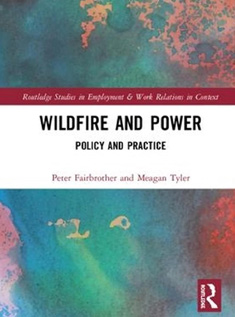 Authors
Authors
Peter Fairbrother and Meagan Tyler
Reviewed by
Dr Malinda Steenkamp
Published by
Routledge
ISBN: 1138370207
This thoughtful and thorough book examines wildfire disasters as social events that are interconnected, multifaceted, immensely consequential yet also disjointed and divisive. The authors draw on perspectives from a variety of fields such as sociology, political science, gender studies and history, which they use to interpret and understand the juncture of Australian policy and preparedness for wildfire (i.e. bushfire, grass and forest fires) in novel ways.
A major strength of this work is that it is grounded in a significant body of research that involved more than 200 interviews in 12 different locations over 3 years (2010–13 in the aftermath of the 2009 Black Saturday bushfires). Interviewees included people from rural and urban-rural areas, sea- and tree-changers, as well as emergency service responders, both staff and volunteers. The authors succeeded in translating academic research in a readily understood piece of work. It is, however, still a book that needs to be read in several sittings. The information and insights the authors share in eloquent ways are comprehensive and thought-provoking. To understand these at a deeper level, one needs to take the time to reflect and consider.
The book brings about a better understanding about the intersection between community, institutions, government and response agencies, particularly around issues of power and inequality, community as a construct and the relationship between people and government. It provides an academically contextualised discussion about the role of community awareness and resilience in bushfire-affected areas. The authors rightly highlight that achieving preparedness is a complex process and that the main problem for government is determining the best and most genuine way agencies can communicate effectively with community members.
Some other messages are that communities are not just localities and that there are contextual nuances such as cohesiveness and disunity that need to be considered. Policy makers must understand how power relations affect social groupings and the agency these groups can exercise before, during and after events. It is not only the social context that matters, but the political plays a huge role as well. Power relationships are brought to the fore during disasters, but these insights can quickly be sidelined or forgotten in the aftermath. This also plays out at the household level. The effects and challenges related to gender dynamics within households are often not well understood nor recognised.
This book is relevant to people working in emergency management, in particular policy makers, practitioners and researchers. It is be pertinent to those who want to understand more about the dynamics of power and diversity and equality, the role of communities in dealing with fires and the challenges of gender and household decision-making when it comes to disasters.


